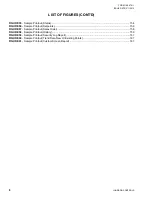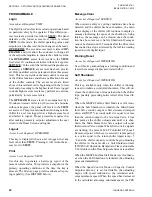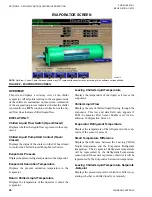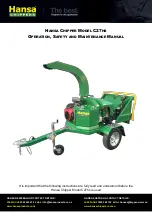
JOHNSON CONTROLS
12
FORM 160.67-O1
ISSUE DATE: 4/1/2015
SECTION 1- DESCRIPTION OF SYSTEM AND FUNDAMENTALS OF OPERATION
STeaM and CondenSaTe floW
(See
Figure 4 on page 13
)
The primary function of a steam turbine is to convert
thermal energy into the mechanical energy required to
rotate the compressor. When the trip valve is opened
and the speed setpoint is increased to open the gov-
ernor valve, the high pressure and temperature steam
enters the steam ring of the turbine. From the steam
ring, the steam passes through some permanently open
nozzles and through the number of hand valves opened
depending on the load requirements. As steam passes
through stationary nozzles, steam pressure decreases
while steam velocity increases. Mechanical energy is
produced when high velocity steam strikes the turbine
blades and causes the turbine rotor to move. As the
steam passes through the stages of the rotor assembly
producing mechanical energy, the thermal energy of
the steam is reduced. The pressure and temperature of
the supply steam determines how much thermal energy
is available to produce mechanical energy and there-
fore have a significant effect on the ability of the chiller
to produce the design refrigeration capacity.
The turbine exhaust must also be held at the proper
vacuum by the steam condenser in order for the turbine
to produce the required mechanical energy for a given
load. The turbine exhaust steam enters the steam con-
denser through the steam inlet connection on the top
of the condenser and is distributed longitudinally over
the tubes. When the steam contacts the relatively cool
tubes, it condenses. This condensing effect is a rapid
change in state from a gas to a liquid, which results in
a great reduction in specific volume. It is this reduc-
tion in volume that creates the vacuum in the steam
condenser. The steam condenser tubes are kept cool by
the circulation of liquid from the refrigerant condenser
outlet, which removes the heat given up by the con-
densing steam. Any air that enters the steam condenser
via leakage in piping, around shaft seals, valves, etc.,
is removed by vacuum venting equipment such as a
liquid ring vacuum pump, steam ejectors, or a combi-
nation of both.
The condensate is circulated by the hotwell pump
through the recirculation and overboard valves. These
valves are controlled by the chiller control panel to
maintain the condensate level in the hotwell at the
bottom of the steam condenser shell below the tubes.
During the slow roll warm-up of the turbine, the con-
densate level will drop causing the overboard valve to
close and the recirculation valve to open and return
most of the condensate to the hotwell. As the turbine
is ramped up to rated speed, more steam is condensed
and the level increases causing the recirculation valve
to close and the overboard valve to open thus returning
more condensate to the boiler.
Summary of Contents for YST
Page 163: ...JOHNSON CONTROLS 163 NOTES...













































